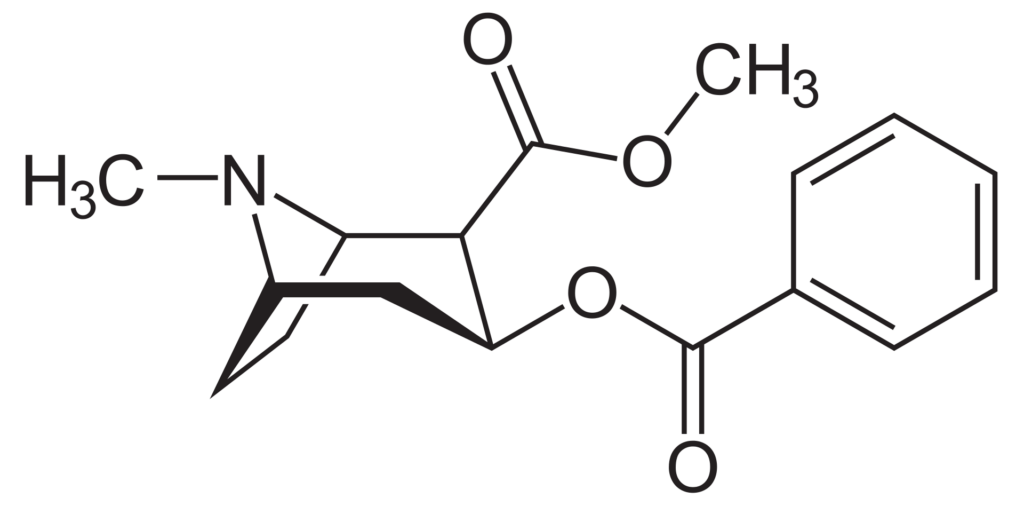Cocaine
Classification: Stimulant
Background: Cocaine is a naturally-occurring anesthetic with vaso-constrictive properties and is a potent central nervous system stimulant. As a local anesthetic, it is used in 1%–4% solutions for eye procedures and 10%–20% solutions for nose and throat procedures. It is self-administered as a drug of abuse in doses of 10–200 mg.
It is still used as a local anesthetic. Medicinal use is rarely found outside hospital settings because of the high potential for abuse, the difficulty of maintaining the license to store cocaine and the availability of suitable substitutes.
Prescribed As: Cocaine is not contained in any prescription medications from a pharmacy.
OTC Use: As late as 1986 an herbal tea sold under the name of “Health Inca Tea” contained enough cocaine to cause positive urine test results. The DEA continues to seize herbal teas containing it.
Street Names: Blow, Coke, Crack, Flake, Snow
Modes of Use: Snorting, intravenous injection, freebase (crack) smoking
Appearance: White powder
Physiological/Psychological Effects: Desirable effects of cocaine include euphoria, weight loss, and sexual stimulation. Prolonged and intense use can lead to paranoia, hallucinations and violent behavior. The central nervous system stimulation (rush) is followed by depression (crash). This rush and crash cycle is the principle reason for the development of chronic cocaine abuse.
Interpretation of Results: A positive urinalysis result for cocaine indicates use of the drug. Commonly used local topical anesthetics such as lidocaine, novocaine and benzocaine are structurally unrelated to cocaine and its metabolites and do not result in a positive immunoassay or LC-MS/MS response. There are no known medications that cause a false positive immunoassay or LC-MS/MS response. Studies have shown that although it can be absorbed through the skin, even intense exposure is insufficient to cause a positive urine test result.
Toxicity: Direct cardiotoxic effects may be the contributory factor in cocaine-induced deaths.
Metabolism: In the body, cocaine is rapidly converted to benzoylecgonine and ecgonine-methyl-ester, which are eliminated in the urine. Only a small fraction of the parent drug is eliminated in the urine, and its detection time following use is short compared to the cocaine metabolites.
Interpretation of Results: The presence of benzoylecgonine is accepted evidence of cocaine use.
Detection Time in Urine: 1–4 days
Detection Time in Oral Fluid: 1–2 days
The information provided is for educational purposes only and is not intended to be used as medical or legal advice. Detection times are approximate and may be influenced by a number of factors, including BMI, duration of drug use, dosage and interindividual metabolic differences. For specific drug testing result interpretation questions, please contact us.

